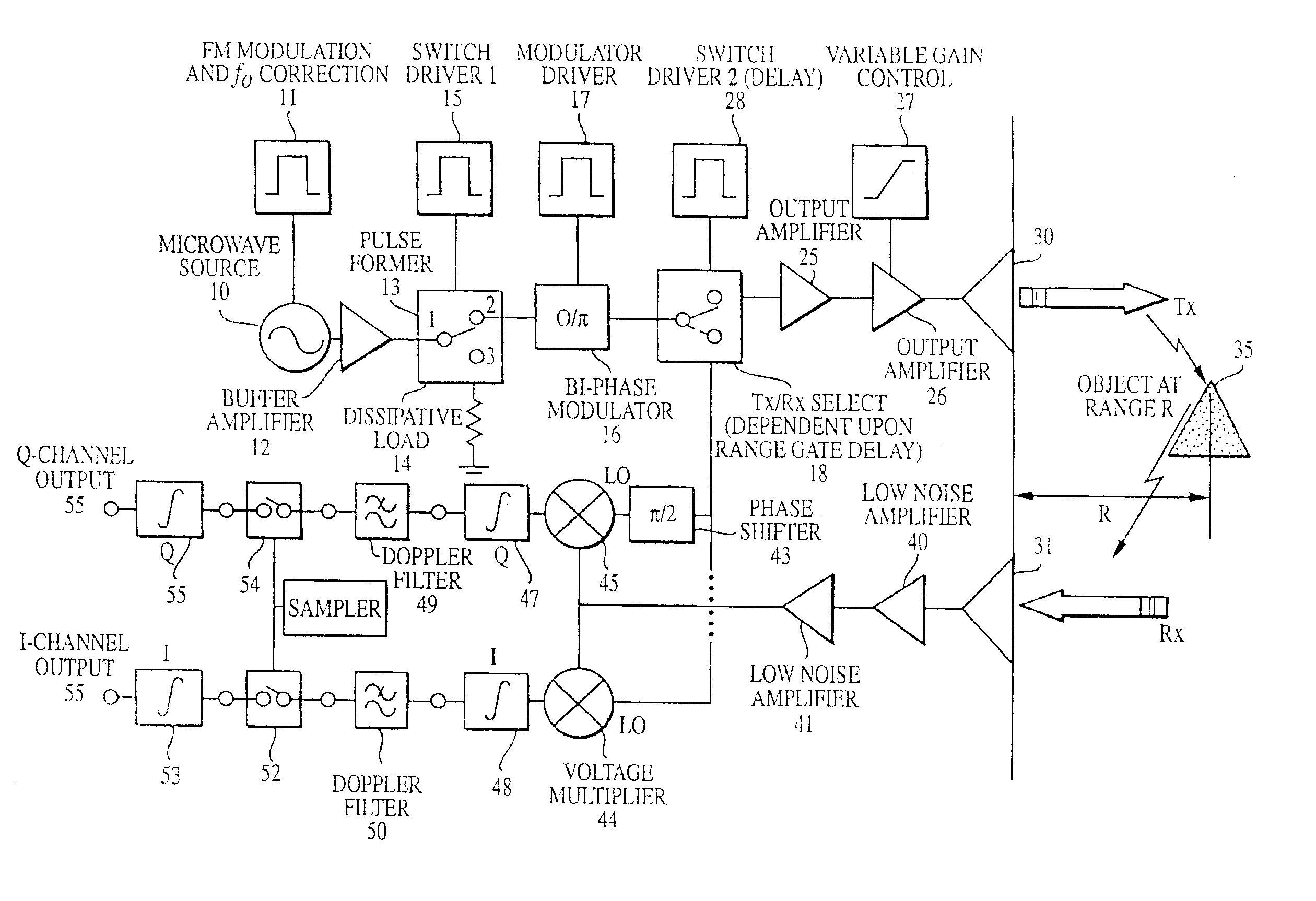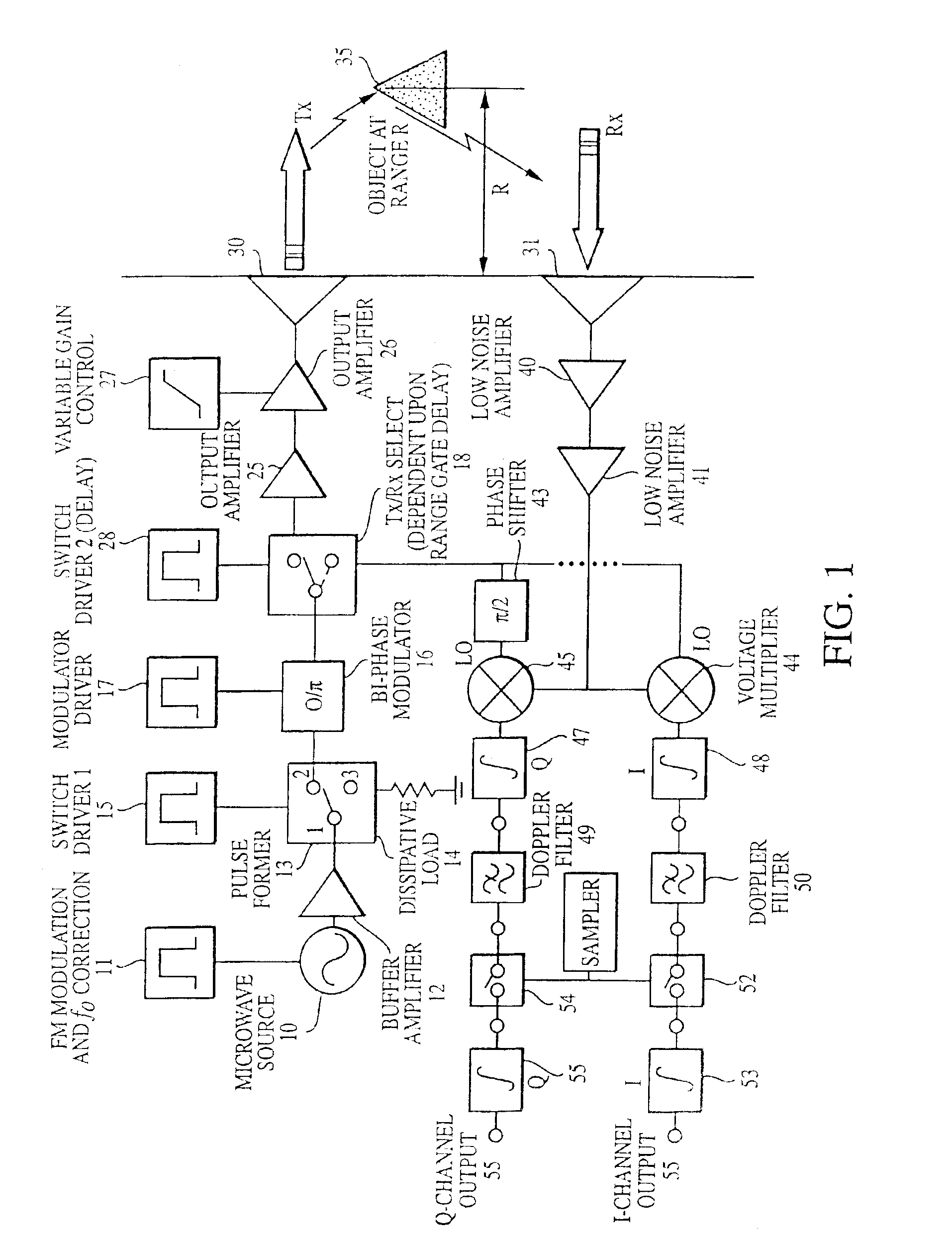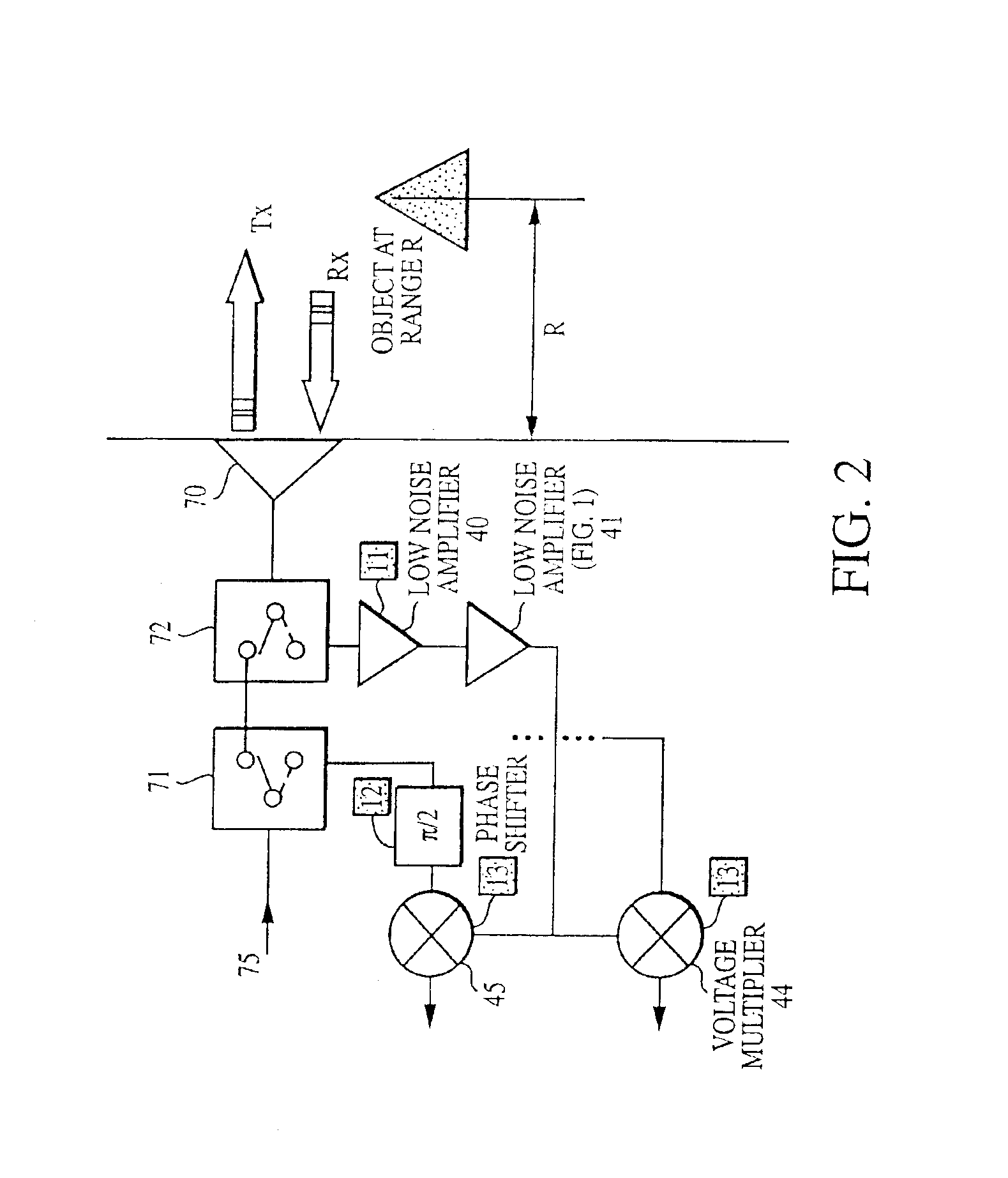Pulse radar detection system
a radar and pulse compression technology, applied in the field of pulse compression radar systems, can solve the problems of reducing the performance of the sensor, reducing the functional operation of the sensor, and increasing the cost of adding each additional circuit block
- Summary
- Abstract
- Description
- Claims
- Application Information
AI Technical Summary
Benefits of technology
Problems solved by technology
Method used
Image
Examples
Embodiment Construction
Referring to FIG. 1 there is shown a sensor architecture of a high-resolution radar (HRR) according to an aspect of the invention. The general principle of operation of a typical radar sensor is that of object detection, position and velocity measurement. In a typical radar, a carrier signal is transmitted from the sensor via an antenna. The antenna may be fixed, or steered where the focus of the beam may be dynamically varied by electronic, or mechanical control. In FIG. 1, there is shown a separate transmit antenna (Tx) 30 and a receive antenna (Rx) 31. Adjacent to the transmit antenna is an arrow designated Tx indicative of a transmitted signal. Similarly, there is an arrow showing a received signal at the receive antenna 31 designated as Rx. Thus, one can use a separate antenna for transmit and receive, but is also possible to use a single antenna to perform transmit and receive operation by adding additional switching elements without changing the principal of the described inv...
PUM
 Login to View More
Login to View More Abstract
Description
Claims
Application Information
 Login to View More
Login to View More - R&D
- Intellectual Property
- Life Sciences
- Materials
- Tech Scout
- Unparalleled Data Quality
- Higher Quality Content
- 60% Fewer Hallucinations
Browse by: Latest US Patents, China's latest patents, Technical Efficacy Thesaurus, Application Domain, Technology Topic, Popular Technical Reports.
© 2025 PatSnap. All rights reserved.Legal|Privacy policy|Modern Slavery Act Transparency Statement|Sitemap|About US| Contact US: help@patsnap.com



